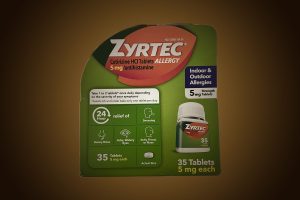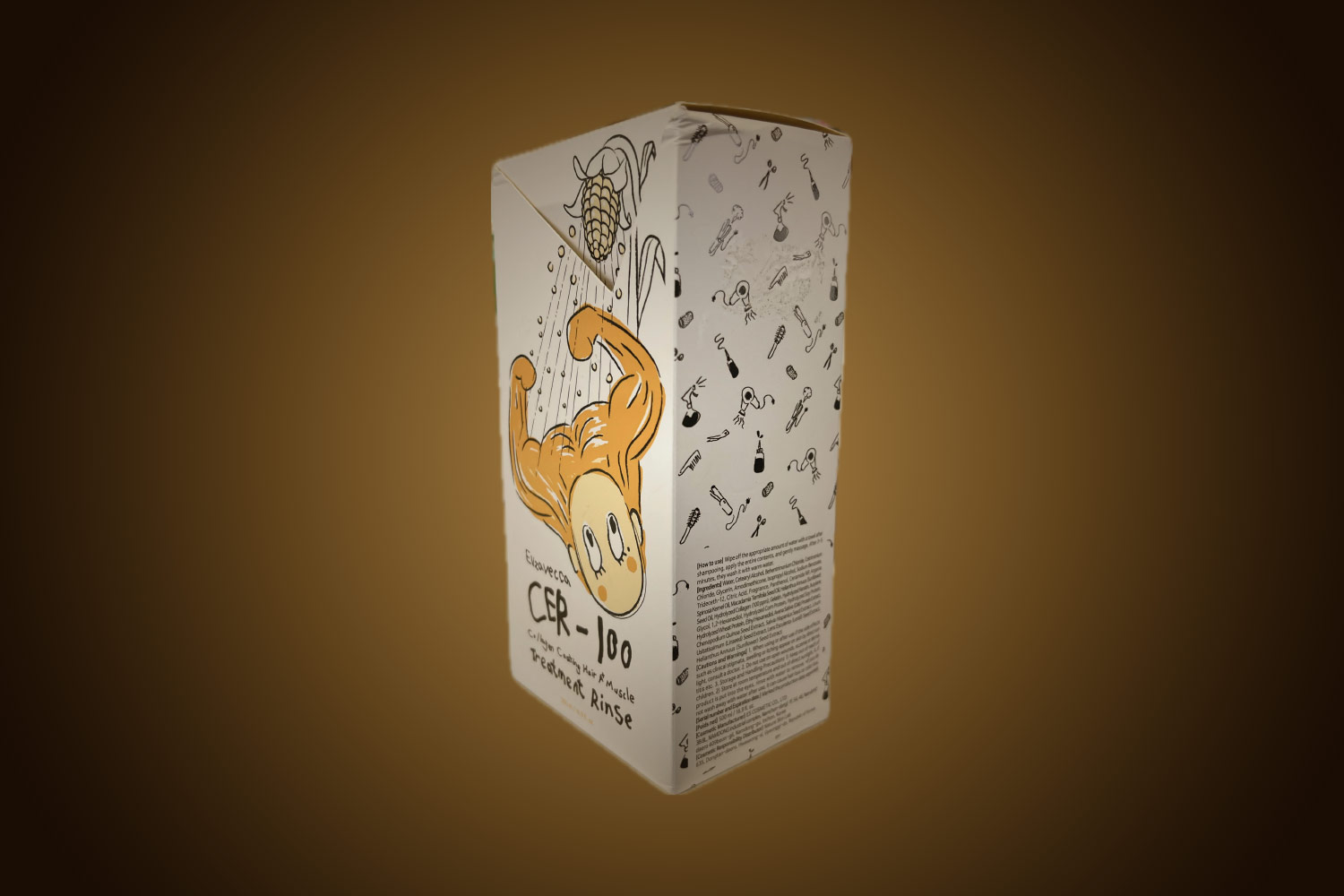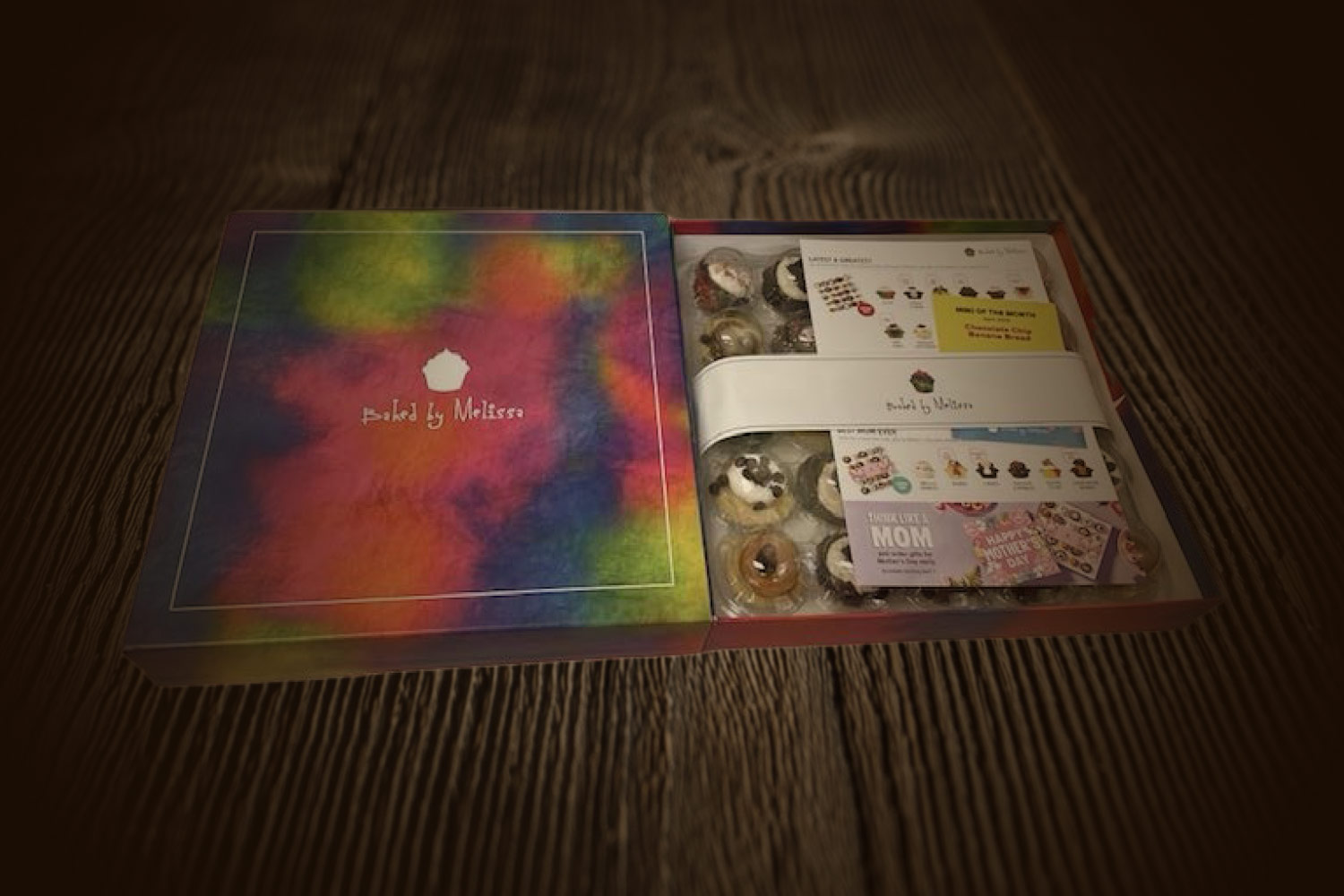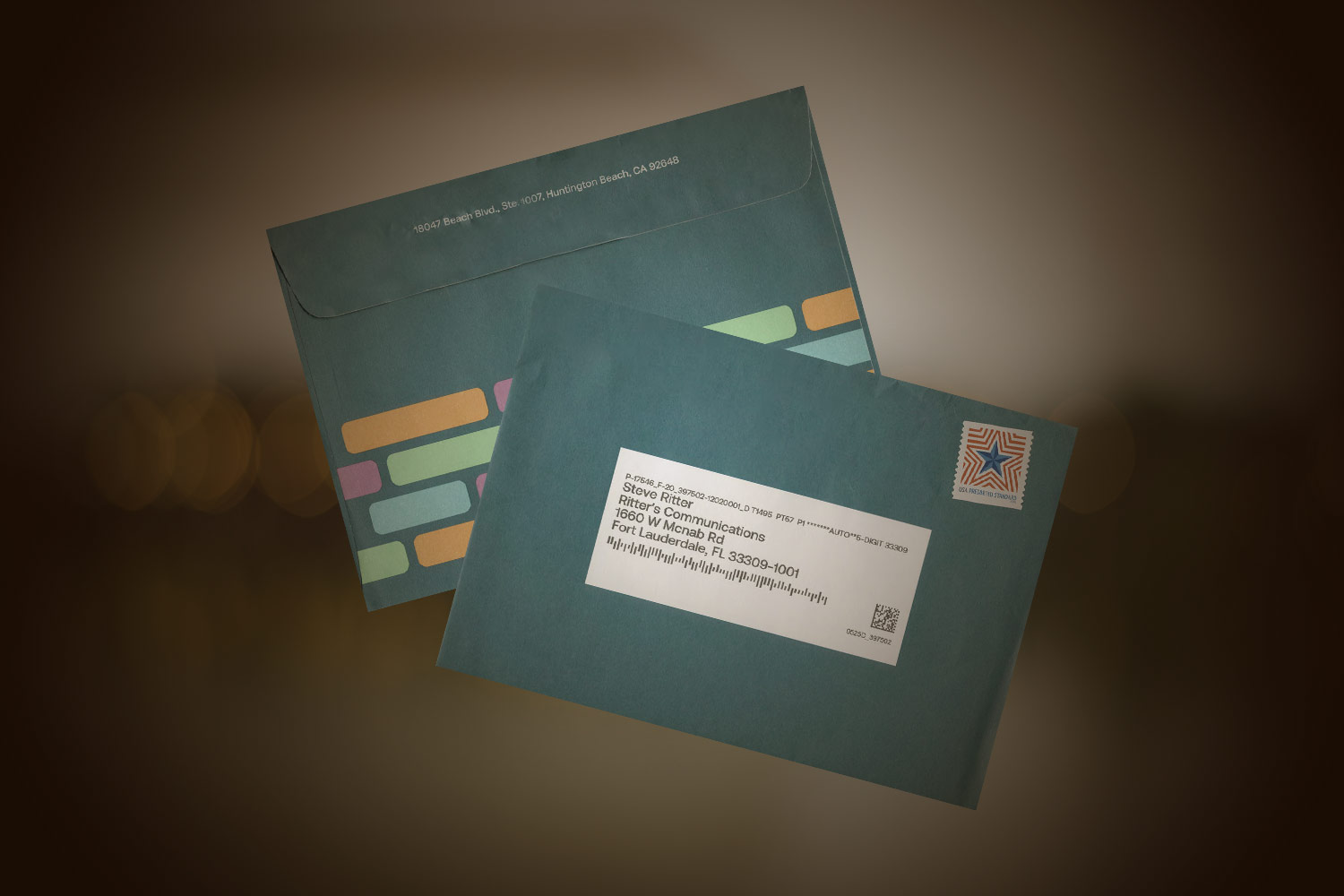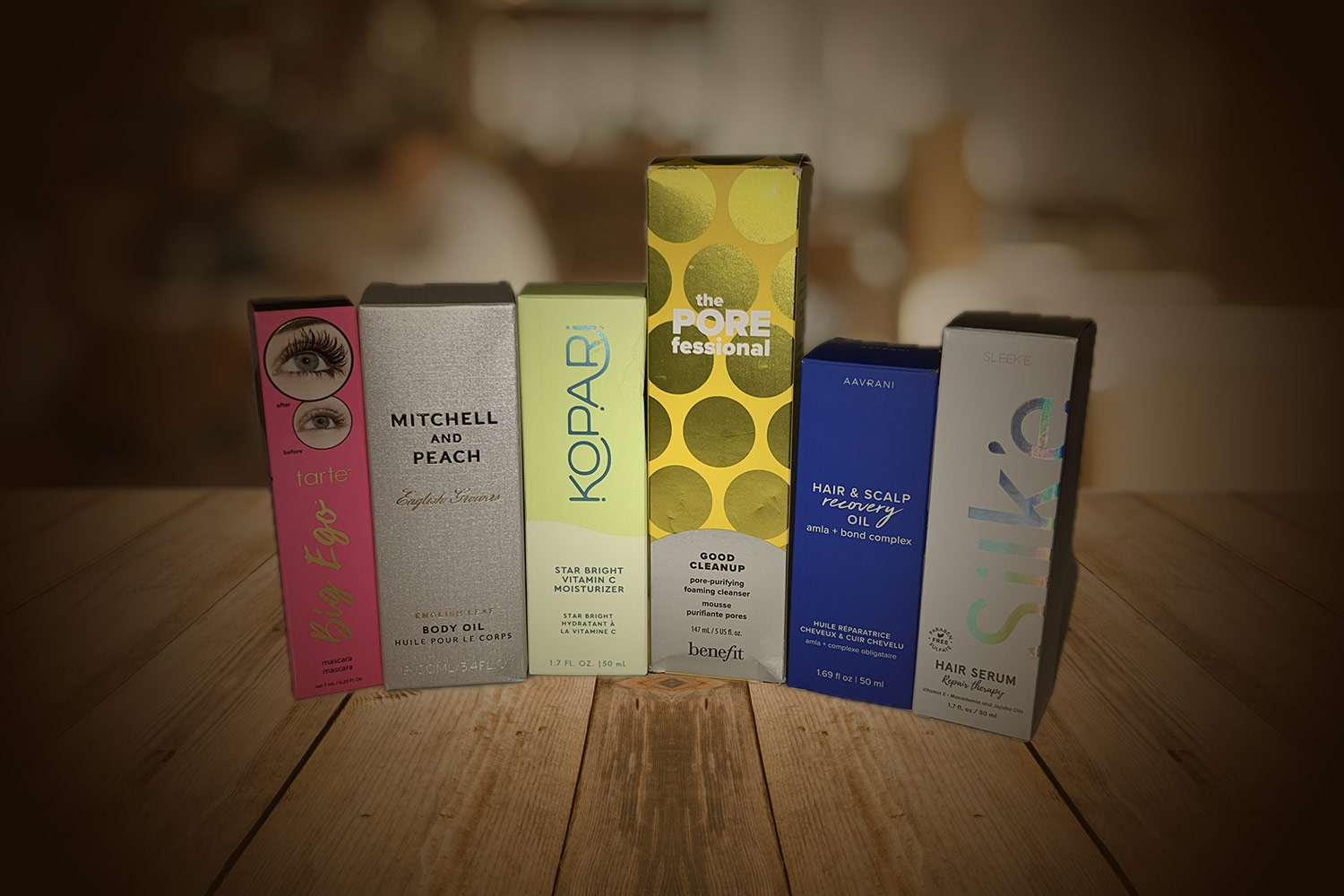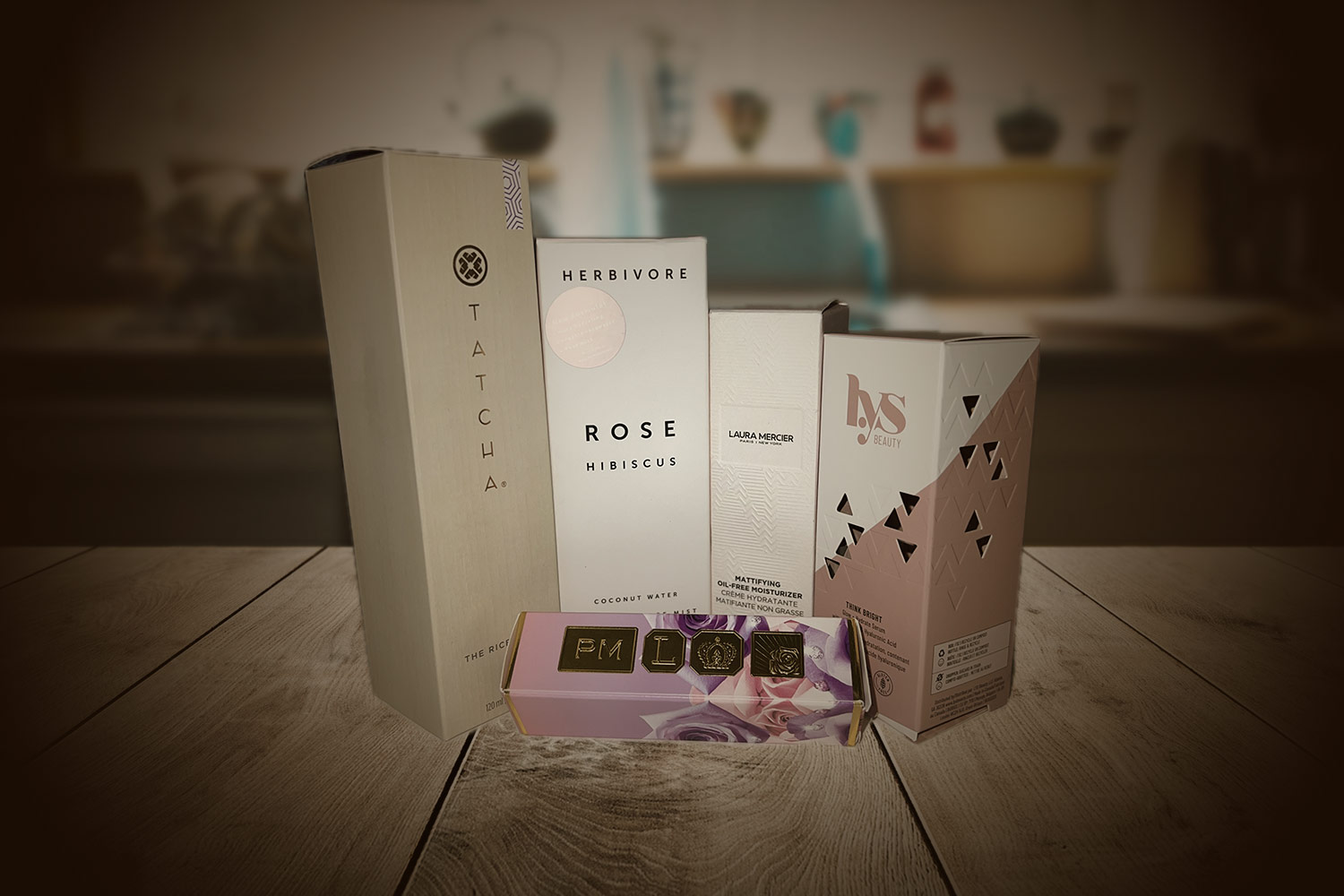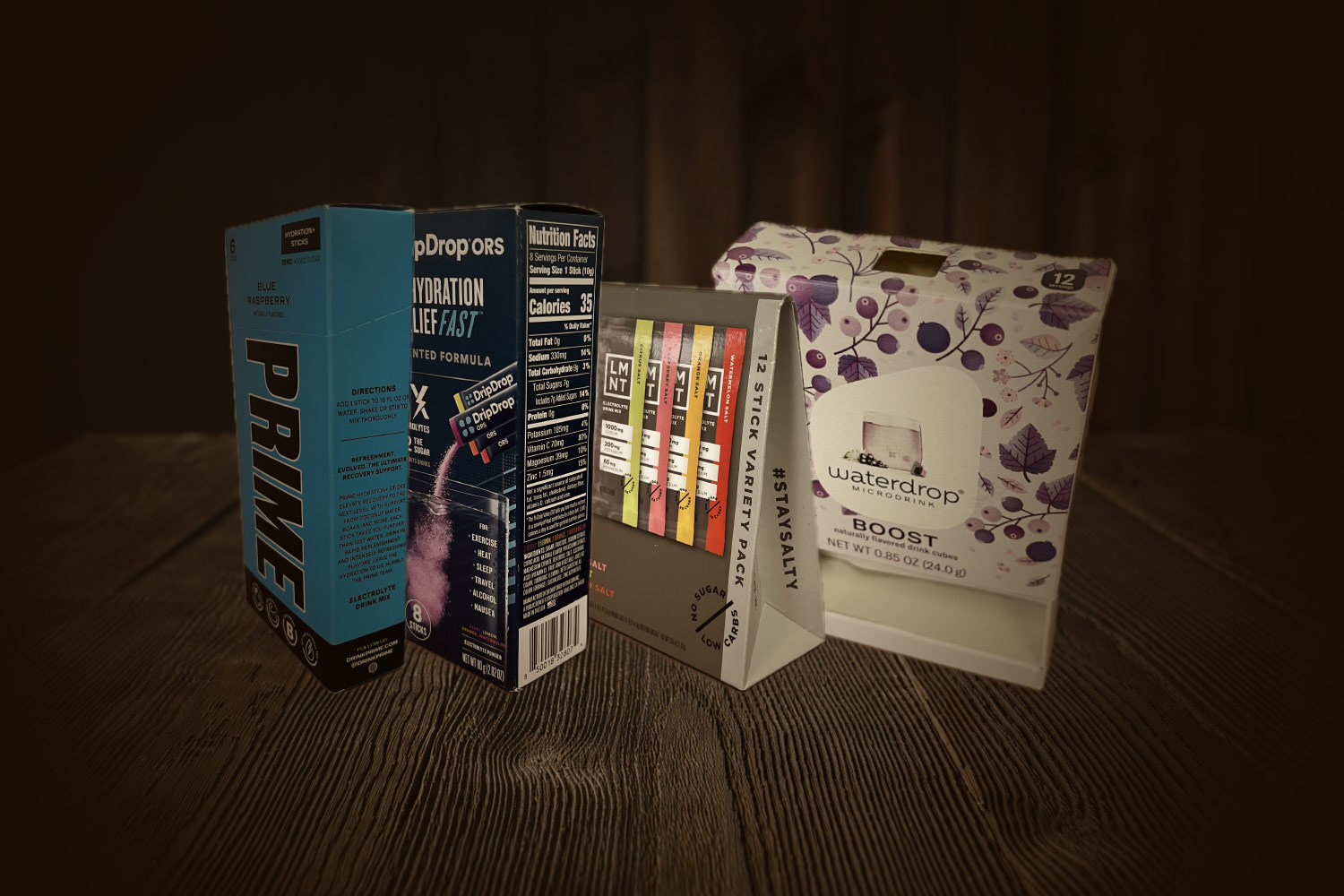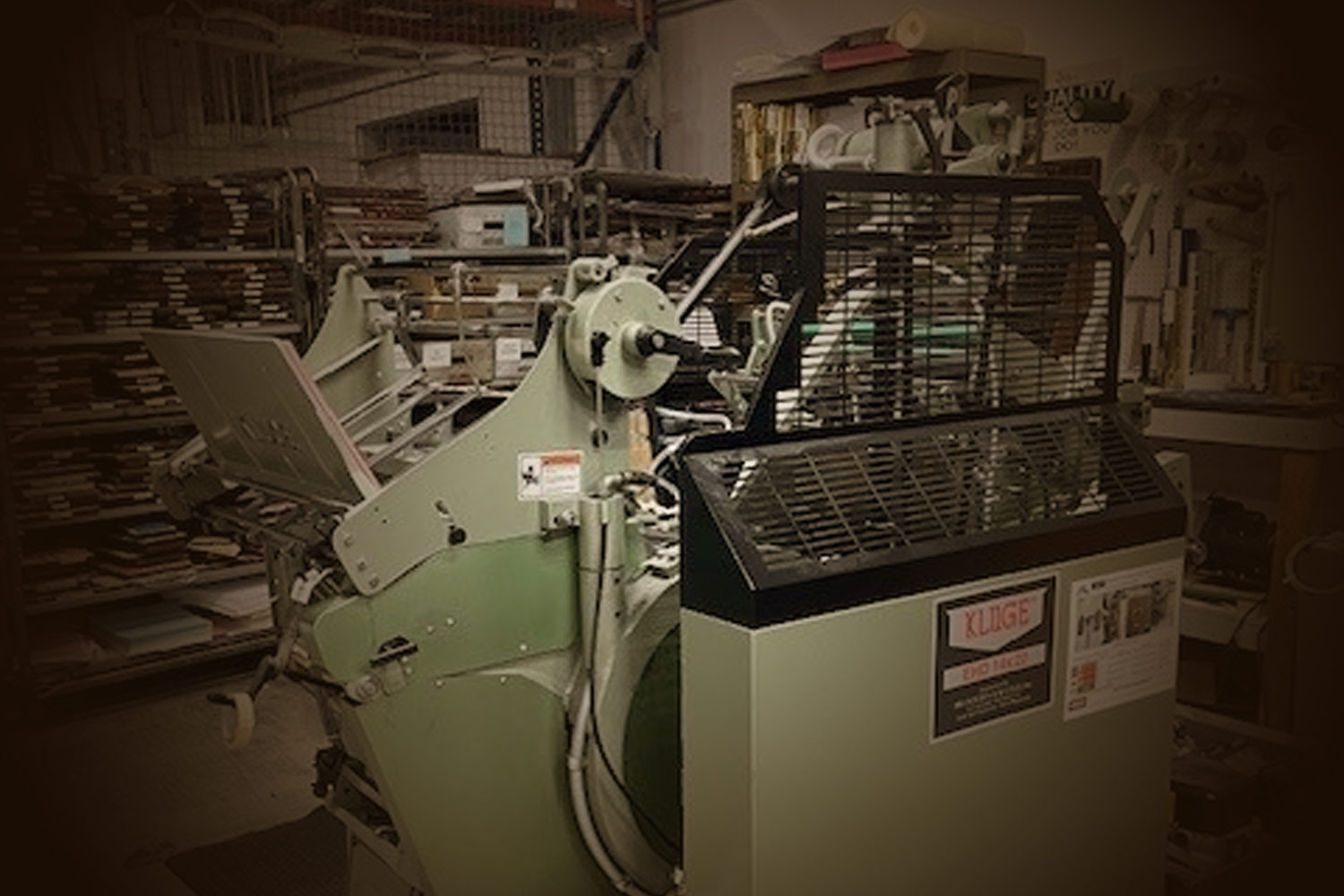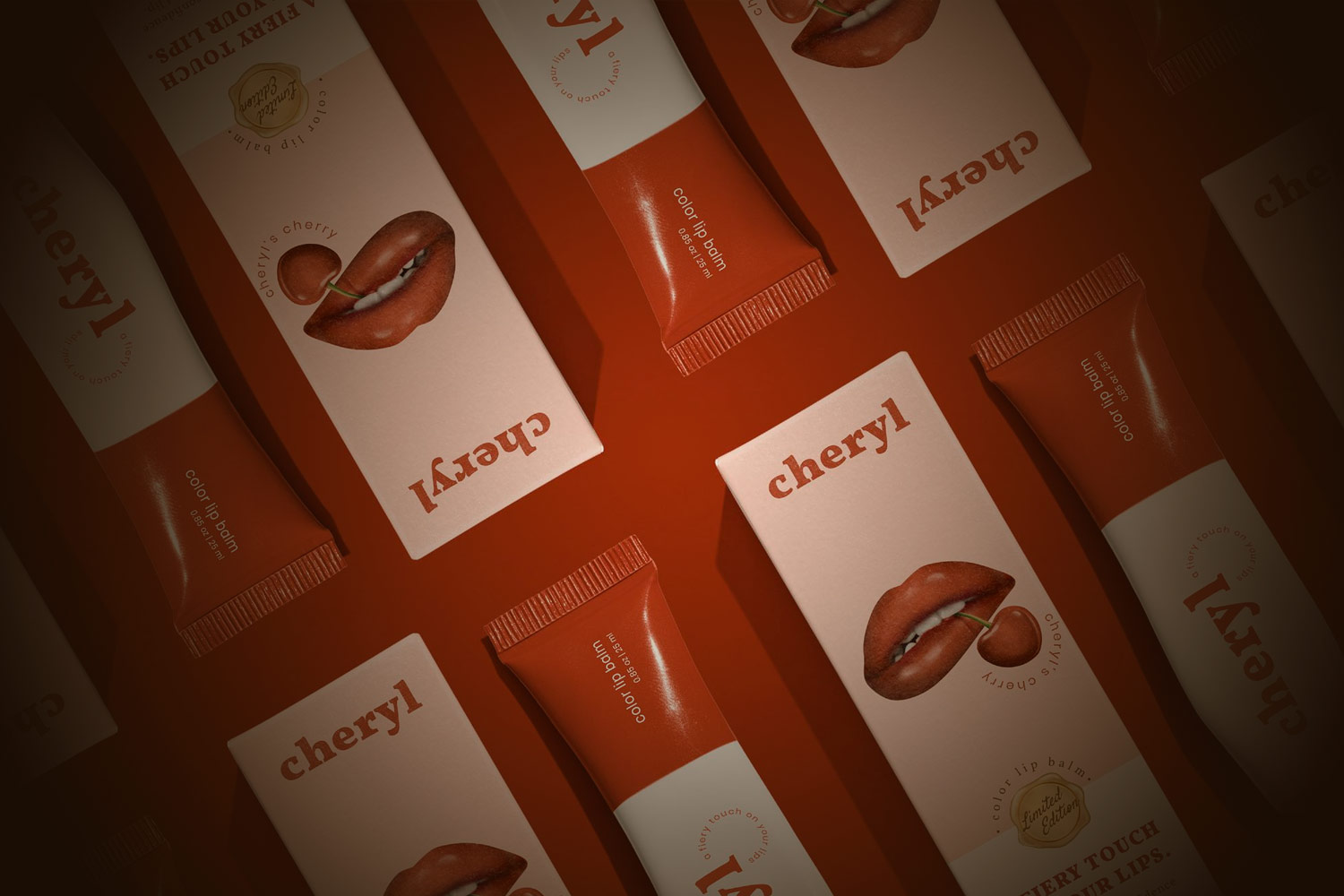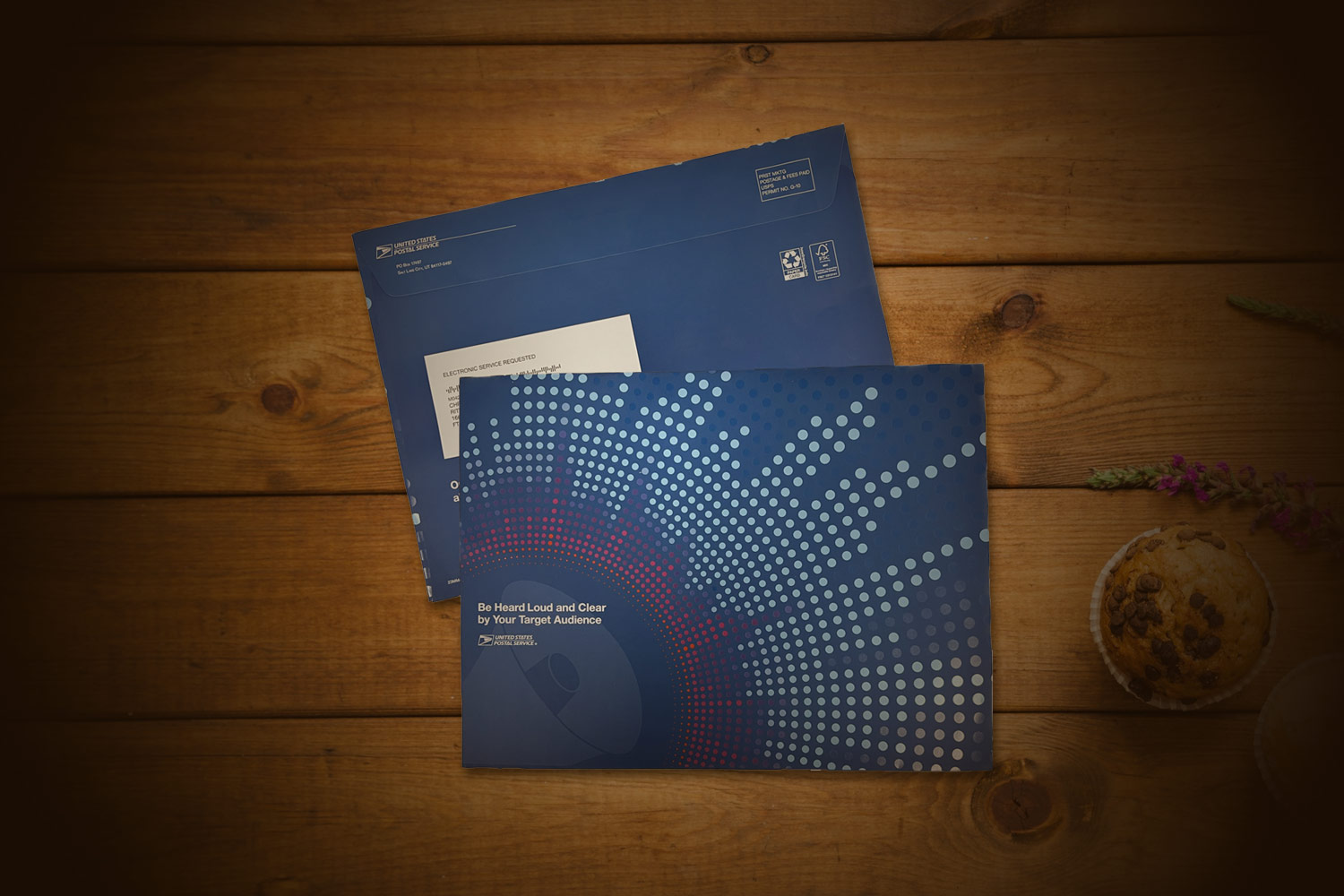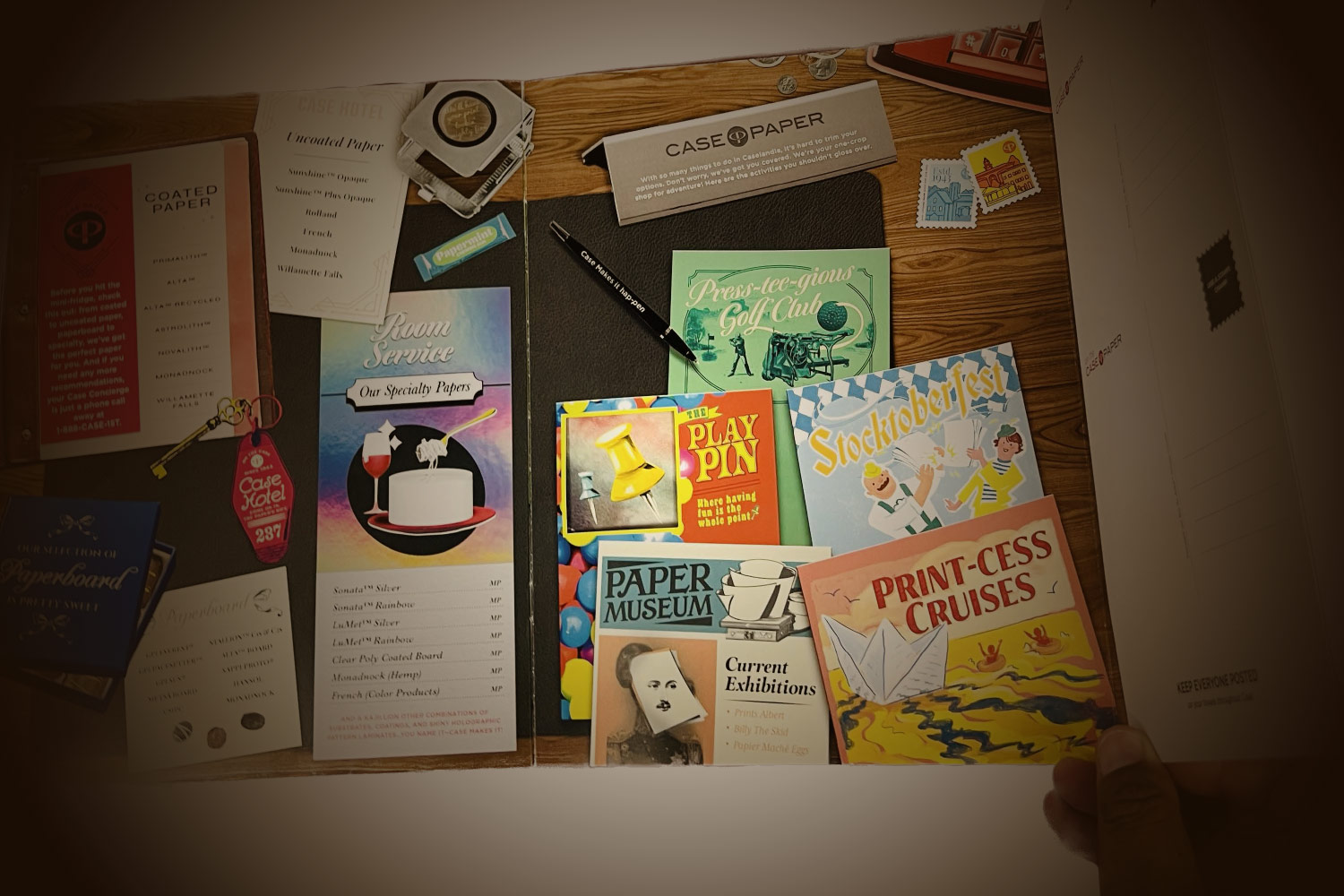My favorite food is chocolate. I decided to try some different brands of chocolate and was immediately impressed with the quality of the packaging and the stories and content that the chocolatiers printed on their packaging. Let’s take a closer look.
Endangered Species
Attractive purple background with their logo on the front. The front side of the package included a reverse white area that listed the description of the chocolate bar (they have lots of varieties), the percentage of cocoa as well as the nutritional facts and best consumed by date. The package included several designations including Non-GMO verified, Fairtrade, and a 10% PCW recycling designation.
The inside of the packaging highlights how Endangered Species partners with non-profit wildlife and conservation organizations to donate ten percent of their net profits. They also explain how consumers can get involved and help. There is a QR code that takes the consumer to their website to learn about their mission, impact, and partners. Their impact report was an interesting read. There was also a video about the company and how they want to inspire consumers to do good as well as eat their chocolate. The package also had a profile of the Bald Eagle – facts about it, its habitat, and how its population is increasing.


Equal Exchange
The front of the package was a nice mixture of red, orange, and brown as the main colors with a little black ink as well. Attractive packaging included the amount of cocoa and the flavor, nutrition facts, and best-before date. The designations included Worker-Owned Cooperative, Kosher Dairy Certified in Switzerland, and USDA Organic.
I bought this bar in a food co-op and later found out Equal Exchange partners with small farmer co-ops and operates as a worker-owned co-op. The front of the package included a photo of a cacao co-op member from Peru which added a human touch to the branding.
The inside of the package told a little bit about the co-op system and a call to action to join them, listing a web address and a phone number. Equal Exchange also included where certain ingredients were sourced from (all grown by small farmer co-ops)– for example, organic cacao from Togo, Dominican Republic, and Peru, organic sugar from Paraguay and Costa Rica and organic vanilla from Madagascar. There was a feature on a sugar partner along with a photo of one of their employees.
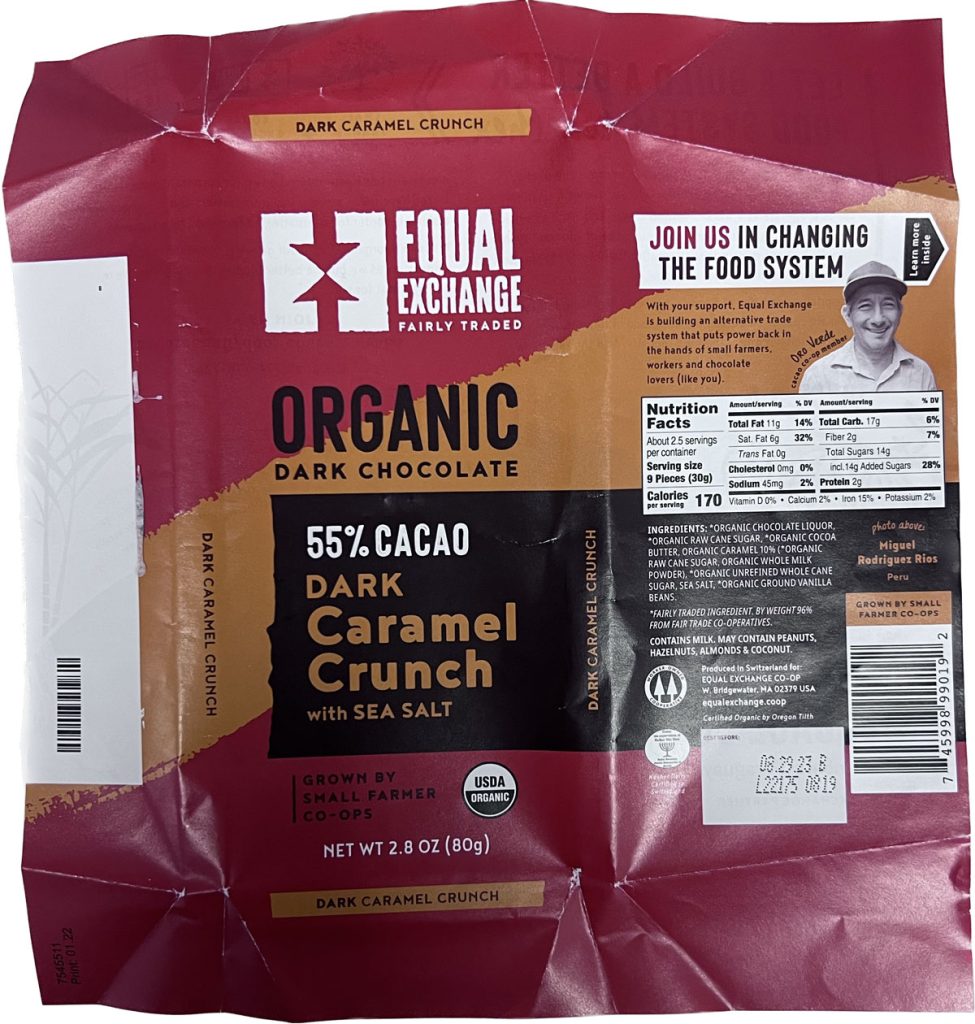

Lake Champlain Chocolates
This package was the least “busy” package of any I reviewed but it still packed a lot in. I loved the cocoa tree logo on the front of the package. They included a description of the chocolate bar, nutrition facts and best enjoyed before date. Their designations include Kosher Dairy, USDA Organic, Certified B Corporation, and printed with FSC recycled content paper.
The inside of the package discussed how to enjoy the treat for the senses – the smell, the shine, the snap, the bite, and the slow melting. It certainly put me in the mood for cholate after reading it. Lake Champlain Chocolates also printed their social media icons with the prompt “Share your extraordinary chocolate moment!”


Divine Chocolate
This package stood out for its solid black background, dark pink images, and gold foil. The entire front side of the package was black ink with some text reversed out in white. The dark pink images were explained on the back side of the package: they are symbols from Ghana, where the company is owned by a cocoa co-op of family farmers. You can go to the Divine Chocolate website to learn more and see what all the symbols mean. The front included “Divine Chocolate” in embossed gold foil as well as “owned by Cocoa Farmers” which gave it a premium feel. The designations included Fairtrade, Certified B Corporation, Vegan and Non-GMO Project verified. The best-used date was published as well as nutrition facts and a little bit about the chocolate itself.
The back side of the package included a little bit about the ownership, a profile and photo of one of the farmers, a listing of some of their other flavors, and social media links. The wrapper was also printed on FSC-certified recycled paper.


Hu – Get back to Human
This was a very interesting way to package the chocolate bar: it was an envelope. Hu printed on brown paper with black ink, cream, and dark pink ink. The front side was a big black solid with the text printed in cream and dark pink ink. The back side was black and cream inks. Hu has a lot of designations: USDA Organic, Fairtrade, Certified Vegan, Certified Paleo, and Non GMO Project Verified.
The packaging included best consumed by date, nutrition facts, why Hu was founded, and their ingredient list. Most interesting was a list of what is NOT included. Hu also included an allergy statement and best kept below temperature.
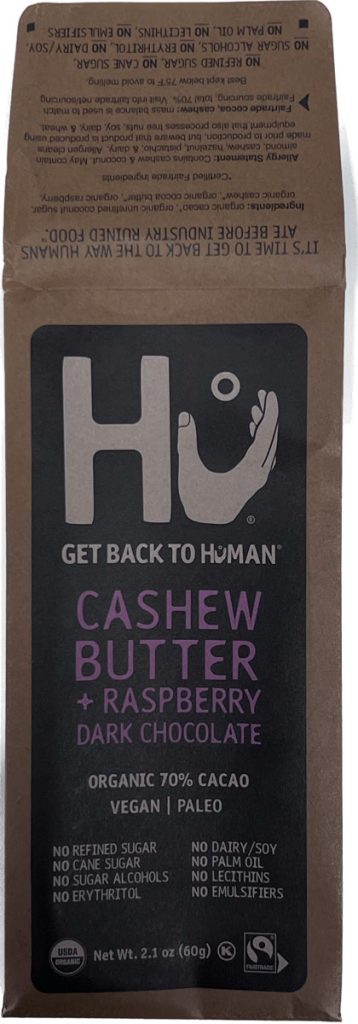

Moka Origins
This was my favorite package and was also the most expensive at $10 for a bar. Moka was the only package that was printed on a cardstock. The package was an attractive color and the name and logo were embossed. It was diecut with rounded corners and had a side slit so the edge tucked in. The words “Our Mission”, “From Bean to Bar”, “Limited Edition” and “Buy a bar save a life” were gold foiled.
The front side listed the flavor, the amount of cocoa, single origin from Uganda, graphics of how they go bean to bar, and the steps in between. They also included the nutritional facts, best-by-date, their company mission, and ingredients.
Designations were USDA Organic and K Natural Food Certifiers. There was also a line of text “Certified Organic by NFC”.
The back side takes the consumer through what Moka Origins believes is a problem in their industry and how they are trying to fix it. The center of the page is an image of their factory which is in a barn. The other portion of the inside is their story and did you know section about chocolate. Moka Origins included a QR code with the instructions “Scan to see your impact”. The consumer was taken to a web page that detailed how buying their product directly improved the lives of farmers and the environment.
The chocolate bars were bought in a boutique, a co-op, and Fresh Market. Premium chocolate=premium price. Bars ranged from $10 – $3.99. The cocao ranged from 55-72% and I found the designations to be fascinating – depending on what a consumer was looking for, there were lots of options if you wanted vegan or organic or paleo. The first five packages were printed on text paper. The last one was printed on card stock and I really noticed the difference in feel and perceived quality. I enjoyed learning about each company and interacting with them by going to their websites. It was interesting to observe how much each company genuinely wanted to help others and the environment. By the way, the chocolate was delicious!
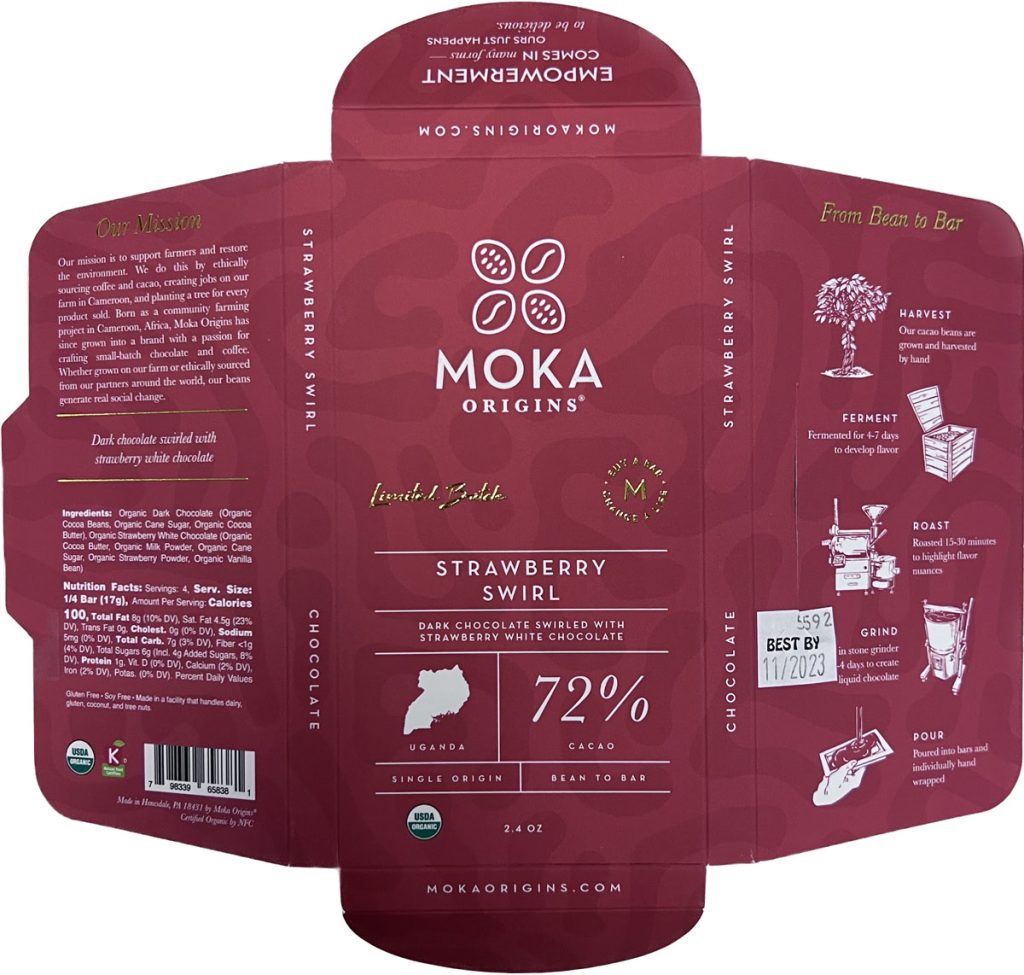
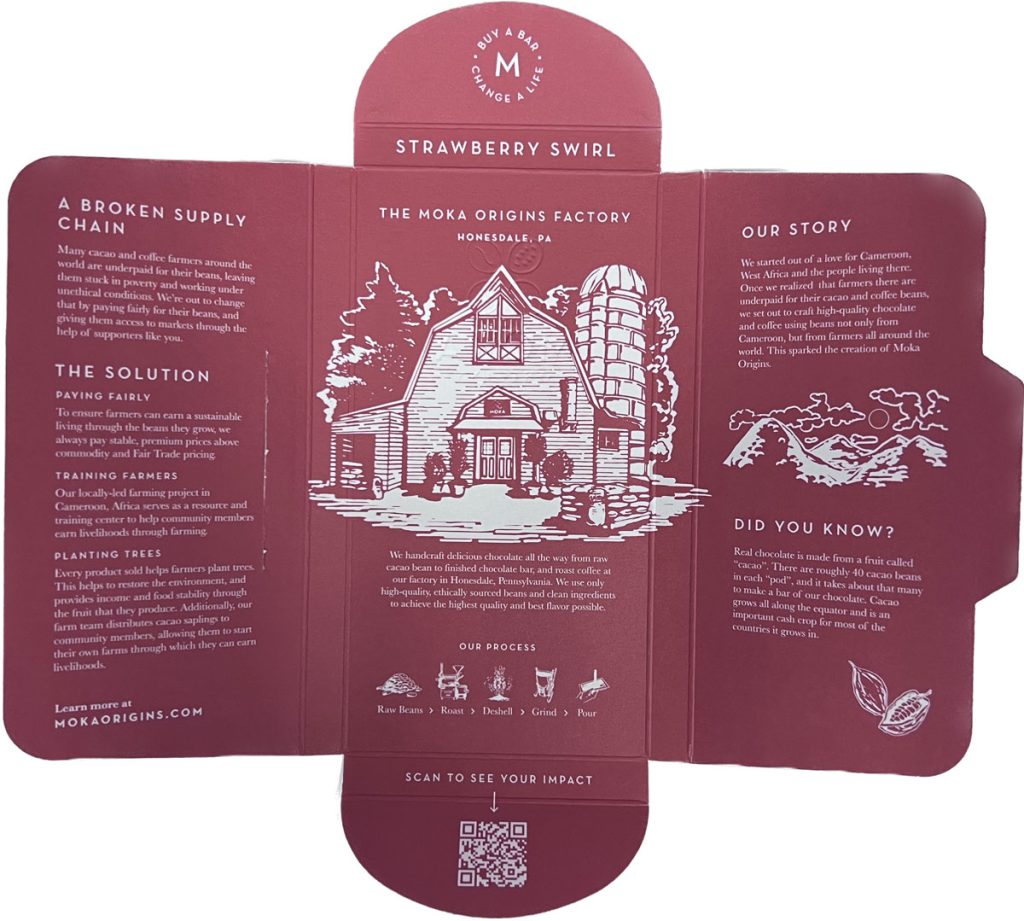
Please note that this is a product that was bought for personal use – this is not a sponsored post.
